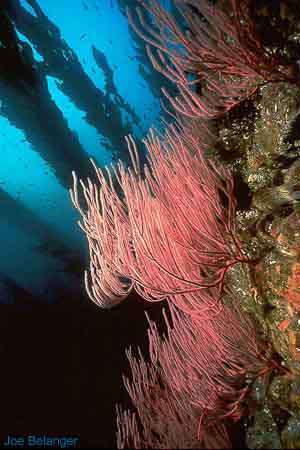|
| |

CW-005
|
| |
Torpedo Ray
(Torpedo californica)
I photographed this "starship enterprise" at Farnsworth Banks, Catalina Island. Although the Torpedo Ray is usually a nocturnal feeder (night feeder), this one was swimming in open water at 11:00 a.m.. It seemed to like my exhaust bubbles and hung around my head for a few minutes, allowing me to shoot this picture.About the Torpedo Ray: Torpedo rays are known also as Pacific electric rays. They do indeed emit enough electricity to light up a light bulb. Electric rays use this feature as a hunting tool and defensive mechanism. They can "ZAP" a fish and then gobble the stunned prey down. Found from British Columbia to central Baja California, Mexico. Size: to 3 feet (1 m) |









